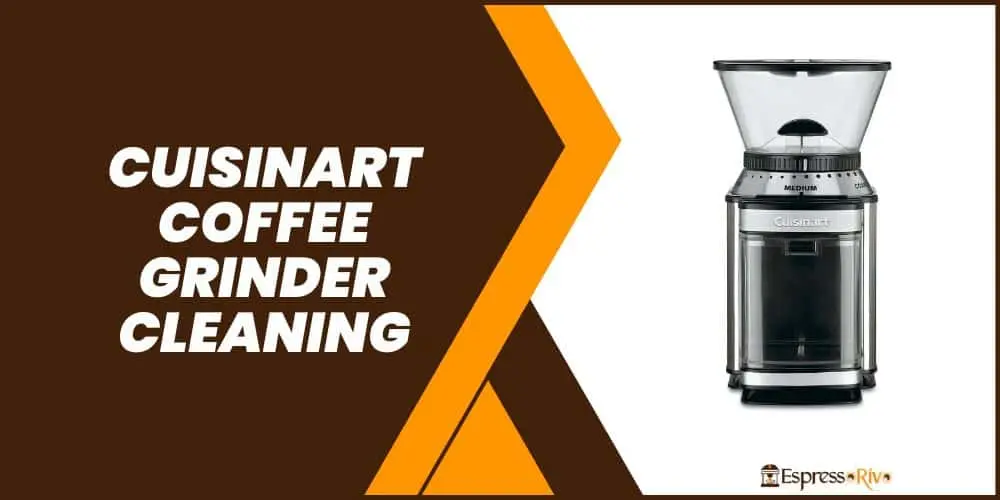Coffee is much more than a simple beverage. For many of us, it’s a ritual, a source of comfort, and an integral part of our daily routine. And when it comes to brewing that perfect cup, one crucial factor often gets overlooked: the coffee grinder. Yes, that unassuming device sitting on your countertop holds the key to unlocking the full potential of your coffee beans.
In this article, we’ll delve into the fascinating world of coffee grinders, focusing on the different types available and how they can significantly impact the taste and quality of your brew. Whether you’re an espresso aficionado, a pour-over enthusiast, or simply seeking a better cup of coffee at home, understanding the nuances of coffee grinders is essential.
We’ll begin by exploring blade grinders, the most common and affordable option on the market. While they may be readily available and easy on the wallet, blade grinders come with their own set of limitations and drawbacks. We’ll uncover their pros and cons, helping you make an informed decision about whether they are the right choice for you.
But don’t stop there! We’ll then move on to the superior choice: burr grinders. These precision machines are favored by coffee connoisseurs for their ability to produce consistent and uniform grinds. We’ll delve into the intricacies of burr grinders, discussing the different types available, such as flat burrs and conical burrs, and highlighting the advantages they bring to your coffee brewing experience.
If you’re torn between manual and electric grinders, we’ve got you covered. We’ll weigh the pros and cons of each option, providing insights into the trade-offs you’ll need to consider. Additionally, we’ll explore specialty grinders designed specifically for different brewing methods, from espresso to French press, ensuring that you can find the perfect grinder to match your preferred brewing style.
Of course, choosing the right coffee grinder involves more than just understanding the types and features. Budget considerations, durability, grind consistency, and ease of maintenance all play a vital role in the decision-making process. We’ll walk you through these factors, equipping you with the knowledge to make an educated choice that aligns with your needs and preferences.
But it doesn’t stop there. We’ll also share essential tips on how to care for and maintain your coffee grinder, prolonging its lifespan and ensuring optimal performance. A well-maintained grinder not only guarantees a delicious cup of coffee today but also preserves the quality of your brews in the long run.
Blade Grinders: The Basics
If you’re just starting your coffee journey or looking for an affordable option, blade grinders are likely to catch your attention. These compact and widely available grinders operate using a simple concept: a spinning blade slices through the coffee beans, achieving the desired grind size. Let’s delve into the basics of blade grinders and uncover their pros and cons.
One of the primary advantages of blade grinders is their affordability. They are often the go-to choice for beginners or those on a tight budget. You can find blade grinders at various price points, making them accessible to a wide range of coffee enthusiasts.
Blade grinders are also known for their convenience and ease of use. With a simple push of a button, the blades spin rapidly, swiftly chopping the coffee beans into smaller pieces. The process is quick, allowing you to grind coffee beans on the spot and maintain the freshness of your brew.
However, it’s important to note that blade grinders do have limitations. One significant drawback is their lack of grind consistency. The spinning blades chop the beans randomly, resulting in uneven particle sizes. This inconsistency can lead to issues during extraction, impacting the overall flavor and quality of your coffee. Achieving a uniform grind size, especially for brewing methods like espresso or pour-over, can be challenging with blade grinders.
Furthermore, blade grinders tend to generate heat during the grinding process. Excessive heat can potentially alter the flavor profile of the coffee beans, robbing your brew of its true potential. If you’re aiming for a nuanced and well-extracted cup of coffee, maintaining optimal temperature control throughout the brewing process is crucial.
Despite these limitations, blade grinders can still produce decent coffee grounds for certain brewing methods like French press or drip coffee makers. Their affordability and simplicity make them an attractive choice for casual coffee drinkers or those who prioritize convenience over absolute precision.
If you opt for a blade grinder, there are a few tips to maximize its performance. Firstly, consider pulsing the grinder instead of continuously running it to achieve a more consistent grind. This allows the beans to move around and avoids excessive heat buildup. Additionally, experimenting with grind duration can help you find the sweet spot for your desired coffee strength.
Burr Grinders: The Superior Choice
When it comes to unlocking the true potential of your coffee beans, burr grinders reign supreme. These precision machines are the weapon of choice for coffee connoisseurs and baristas alike, thanks to their ability to produce consistent and uniform grinds. Let’s dive into the intricacies of burr grinders and understand why they are considered the superior choice.
Unlike blade grinders, burr grinders operate using two serrated plates called burrs. These burrs can be either flat or conical and are positioned close together. As the coffee beans pass between the burrs, they are crushed and ground to a precise and uniform size.
The greatest advantage of burr grinders lies in their ability to achieve consistent grind sizes. With their finely tuned mechanism, burr grinders ensure that each coffee particle is of the same size, resulting in an even extraction and a more balanced flavor profile. Whether you’re brewing espresso, pour-over, or any other method, the consistency provided by burr grinders allows you to optimize the brewing process and attain the desired taste.
Another notable benefit of burr grinders is their versatility. Unlike blade grinders, burr grinders offer a wide range of grind size options, allowing you to fine-tune the settings to match your preferred brewing method. From the fine grind required for espresso to the coarser grinds needed for French press, burr grinders give you the flexibility to experiment and customize your coffee experience.
Additionally, burr grinders excel in maintaining the integrity of the coffee beans. The slow and precise grinding action generates minimal heat, preserving the delicate flavors and aromas locked within the beans. This ensures that your brew captures the nuances and subtleties of the coffee, delivering a truly exceptional cup.
When it comes to burr grinders, you have a choice between flat burrs and conical burrs. Flat burrs, as the name suggests, feature two flat rings that grind the beans. They are known for producing consistent and uniform grinds across a wide range of settings. On the other hand, conical burrs have a cone-like shape, and their grinding action tends to be slower and cooler, making them an excellent option for preserving the delicate flavors of the coffee.
Manual vs. Electric Grinders
When it comes to choosing a coffee grinder, one decision you’ll need to make is whether to go for a manual or an electric model. Each type has its own unique benefits and considerations, catering to different preferences and lifestyles. Let’s delve into the differences between manual and electric grinders to help you determine which option is the right fit for you.
Manual Grinders: Back to Basics
Manual grinders offer a hands-on, nostalgic coffee grinding experience. They usually consist of a hand crank attached to a burr set, allowing you to manually grind the coffee beans. While this may require a bit more effort, many coffee enthusiasts find joy in the process and appreciate the control it gives them over their grind.
One of the primary advantages of manual grinders is their portability. They are compact, lightweight, and don’t require an electrical power source. This makes them ideal for travelers, campers, or anyone who wants to enjoy freshly ground coffee on the go. Additionally, the absence of electricity means they operate silently, making them a great choice for those who prefer a quiet morning coffee routine.
Manual grinders also excel in grind consistency. By using your own muscle power, you have direct control over the grinding speed and can adjust it to achieve the desired results. This precision allows you to fine-tune your grind size for different brewing methods, resulting in excellent extraction and flavor.
However, it’s important to note that manual grinding can be time-consuming, especially if you’re grinding large quantities of coffee. The process requires physical effort and may not be ideal for those who want a quick and convenient grinding experience. Additionally, some manual grinders have limited capacity, so if you’re brewing coffee for a larger group, you might need to grind in batches.
Electric Grinders: Power and Convenience
Electric grinders, on the other hand, offer speed, convenience, and effortless grinding at the push of a button. With powerful motors and advanced mechanisms, electric grinders can quickly and efficiently grind large amounts of coffee beans, catering to the needs of busy households or coffee shops.
One of the key advantages of electric grinders is their convenience. The automated grinding process saves you time and effort, allowing you to achieve a consistent grind size with minimal manual labor. Electric grinders are perfect for those who value efficiency and want a hassle-free grinding experience.
Electric grinders also offer a wide range of features and settings. Many models have programmable timers, allowing you to set the desired grind duration for precise control. They often come with adjustable grind size settings, making it easy to switch between different brewing methods and experiment with various coffee flavors.
However, electric grinders do have some considerations. They tend to be larger and heavier than manual grinders, requiring dedicated countertop space. Additionally, the noise level can be a factor to consider, especially if you prefer a quieter environment during your morning routine.
Ultimately, the choice between manual and electric grinders depends on your personal preferences and lifestyle. If you value the tactile experience, portability, and control over grind size, a manual grinder might be the perfect match for you. On the other hand, if you prioritize speed, convenience, and consistent results, an electric grinder will likely be more suitable.
Specialty Grinders for Specific Brewing Methods
Coffee brewing is an art, and different methods require specific grind sizes to extract the best flavors from your beans. That’s where specialty grinders come into play. These dedicated machines are designed to cater to the unique requirements of various brewing methods, ensuring you achieve optimal results with every cup. Let’s explore the world of specialty grinders and discover how they can enhance your preferred coffee preparation technique.
Espresso Grinders: Fine-Tuned Precision
Espresso lovers know that achieving the perfect shot requires a fine and consistent grind. Espresso grinders are specially engineered to deliver the precise grind size needed for this brewing method. They often feature stepless or micro-adjustable settings, allowing you to fine-tune the grind size with utmost accuracy.
Espresso grinders typically use flat burrs or conical burrs that can produce fine grounds. The consistent grind size achieved by these grinders is essential for proper extraction and the creation of rich, flavorful espresso. Whether you prefer a single shot, a double shot, or experimenting with different recipes, an espresso grinder is a vital tool for any espresso enthusiast.
Pour-Over and Drip Grinders: Balancing Extraction
Pour-over and drip coffee methods rely on a controlled brewing process, and the grind size plays a crucial role in achieving balanced extraction. Specialty grinders designed for pour-over and drip brewing methods offer a wide range of grind size options to match your preferences.
These grinders often feature a variety of settings that allow you to adjust the grind size to match your specific pour-over device or drip coffee maker. Whether you’re using a Hario V60, Chemex, or a standard drip machine, having a grinder specifically tailored for pour-over and drip brewing ensures you can achieve the optimal extraction and flavor clarity.
French Press and Cold Brew Grinders: Coarser is Better
French press and cold brew enthusiasts know that a coarser grind is key to extracting the rich flavors and minimizing sediment in the final cup. Specialty grinders for French press and cold brew are designed to produce a consistent coarse grind, ensuring that you get the most out of these brewing methods.
With a dedicated French press or cold brew grinder, you can easily adjust the grind size to match the immersion time and brewing parameters. These grinders often have larger burrs to handle the coarser grind and minimize the production of fine particles that can result in over-extraction or a muddy cup.
AeroPress Grinders: Versatility and Precision
The AeroPress is known for its versatility, allowing coffee enthusiasts to experiment with various recipes and brewing techniques. To fully unlock the potential of this brewing method, having a grinder specifically optimized for AeroPress can make a significant difference.
AeroPress grinders are designed to produce a range of grind sizes, from fine to medium, enabling you to adapt to different AeroPress recipes and achieve desired results. These grinders often offer quick and easy adjustments, allowing you to switch between grind settings effortlessly and experiment with different brewing parameters.
Investing in a specialty grinder tailored to your preferred brewing method can greatly enhance your coffee experience. The precise grind sizes offered by these grinders ensure optimal extraction, resulting in well-balanced and flavorful cups of coffee.
Factors to Consider When Choosing a Coffee Grinder
Choosing the right coffee grinder can significantly impact the quality of your brews and the overall coffee experience. With a wide range of options available, it’s essential to consider several key factors when making your selection. Let’s explore the important considerations that will guide you towards finding the perfect coffee grinder for your needs.
Budget: Finding the Sweet Spot
Your budget plays a crucial role in determining the type and quality of coffee grinder you can afford. Grinders come in various price ranges, from budget-friendly options to high-end models. It’s important to set a realistic budget that aligns with your needs and expectations.
While it’s tempting to opt for the most affordable grinder, keep in mind that investing in a higher-quality grinder can yield better results in terms of grind consistency, durability, and overall performance. Consider the long-term value and durability of the grinder, as it may be more cost-effective to invest in a slightly higher-priced grinder that will last longer and deliver better results.
Grinding Mechanism: Blade or Burr
The grinding mechanism is a critical factor that determines the quality of your grind and the resulting flavor in your cup. As discussed earlier, blade grinders and burr grinders offer distinct advantages and disadvantages.
Blade grinders are more affordable and convenient, but they lack consistency in grind size and may generate heat during the grinding process. On the other hand, burr grinders deliver precise and uniform grinds, ensuring optimal extraction and flavor. If you’re serious about your coffee and value consistency and quality, investing in a burr grinder is highly recommended.
Grinding Settings: Versatility and Precision
Consider the range of grinding settings available on the grinder and whether they align with your preferred brewing methods. Different brewing methods require specific grind sizes, and having a grinder that offers a wide range of settings allows you to experiment and optimize your brews.
Some grinders offer stepless or micro-adjustable settings, giving you ultimate control over the grind size. This versatility is particularly beneficial if you enjoy exploring different brewing methods or like to fine-tune your grind size to suit specific coffee beans or recipes.
Grinder Type: Manual or Electric
Decide whether you prefer the hands-on experience of a manual grinder or the convenience of an electric grinder. Manual grinders are portable, quiet, and offer a more tactile experience, while electric grinders provide speed and ease of use.
Consider your lifestyle, brewing habits, and the level of control you desire when selecting between manual and electric grinders. If you value portability or have limited countertop space, a manual grinder might be a better fit. If convenience and efficiency are important to you, an electric grinder will save you time and effort.
Durability and Build Quality: Long-Term Investment
A coffee grinder is an investment, and you want it to last. Look for grinders that are built with durable materials and have a solid construction. Stainless steel or ceramic burrs are known for their longevity and consistent performance.
Read reviews and research the reputation of different grinder brands to ensure you choose a reliable and well-built product. A grinder that can withstand regular use and maintain consistent grinding performance over time will provide you with a more satisfying and enduring coffee experience.
Ease of Cleaning and Maintenance
Keeping your grinder clean is essential for maintaining optimal performance and flavor. Consider the ease of cleaning and maintenance when selecting a grinder. Removable burrs or easy access to the grinding chamber can make the cleaning process simpler and more efficient.
Some grinders also come with cleaning brushes or include instructions for proper maintenance. Regular cleaning and maintenance will prolong the lifespan of your grinder and ensure that it
Care and Maintenance of Coffee Grinders
To ensure that your coffee grinder continues to deliver consistent and flavorful results, proper care and maintenance are essential. Regular cleaning and upkeep will not only prolong the lifespan of your grinder but also contribute to the overall quality of your coffee. Let’s explore some tips for effectively caring for and maintaining your coffee grinder.

Cleaning the Grinding Chamber
The grinding chamber is where the magic happens, but it’s also where coffee oils and residue can accumulate over time. To maintain optimal performance and prevent any flavor contamination, it’s crucial to clean the grinding chamber regularly.
First, unplug your grinder and remove any remaining coffee beans from the hopper. Then, using a brush or a dry cloth, gently remove the excess coffee grounds and residue from the grinding chamber and burrs. Be careful not to wet the burrs or expose them to excessive moisture, as this can lead to clogging or rusting.
For a deeper clean, consider using a dedicated grinder cleaning tablet or a mixture of rice grains and a small amount of dish soap. Follow the manufacturer’s instructions for using cleaning tablets or run a small amount of rice grains through the grinder to absorb oils and residue. Afterward, run a few coffee beans through the grinder to remove any remaining rice or soap particles.
Cleaning and Replacing Burrs
Burrs are the heart of your grinder, responsible for producing consistent and precise grinds. Over time, they can become dull or clogged, affecting the quality of your grind. Cleaning and occasionally replacing the burrs will help maintain optimal performance.
Refer to your grinder’s user manual for specific instructions on cleaning or replacing the burrs. Some grinders allow for easy removal of the burrs for cleaning, while others may require specialized tools or professional servicing. Regularly inspect the burrs for signs of wear or damage and replace them as necessary to ensure consistent grinding results.
Adjusting and Calibrating
To maintain accurate grind size settings, it’s important to periodically check and calibrate your grinder. This is particularly crucial for espresso grinders where precise adjustments are essential for achieving the perfect shot.
Check the grind size against a reference point or use a calibration tool to ensure that your grinder is producing the desired grind size consistently. If you notice any discrepancies or inconsistencies, consult your grinder’s user manual for instructions on recalibration.
Storing Your Grinder
Proper storage of your coffee grinder can help protect it from dust, moisture, and potential damage. When not in use, store your grinder in a cool and dry place, away from direct sunlight. Consider using the provided hopper cover or airtight containers to prevent moisture or contaminants from entering the grinding chamber.
If you’re storing your grinder for an extended period, it’s recommended to clean it thoroughly before doing so. Remove any remaining coffee beans and residue, clean the burrs, and ensure that the grinder is completely dry to prevent the growth of mold or mildew.
Conclusion
A coffee grinder is an indispensable tool for any coffee enthusiast seeking to elevate their brews to new heights. Understanding the different types of grinders and their unique features empowers you to make an informed decision based on your brewing preferences and budget.
From blade grinders to burr grinders, each type has its pros and cons. Burr grinders, with their precise and consistent grind size, are often considered the superior choice for achieving optimal flavor extraction. However, blade grinders can still serve as a convenient and budget-friendly option for those starting their coffee journey.
Whether you opt for a manual or electric grinder depends on your lifestyle and preferences. Manual grinders offer a more hands-on and portable experience, while electric grinders provide convenience and speed. Consider factors such as ease of cleaning, durability, and the range of grind settings when making your selection.
For specialty brewing methods like espresso, pour-over, French press, or AeroPress, investing in a grinder specifically designed for each brewing technique can enhance your coffee experience. These grinders offer the precision and versatility needed to achieve the ideal grind size and extraction for each method, resulting in exceptional cups of coffee.
Ronsil
Meet Ronsil, the master barista behind EspressoRivo. With years of experience in the coffee industry, he brings a wealth of knowledge and passion to the table. As the owner of a successful coffee shop, Ronsil is a sought-after adviser in the field. His expertise and love for the craft shines through in every cup he serves. We are honored to have him as part of our team at EspressoRivo





